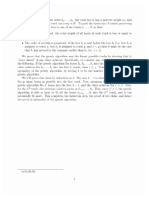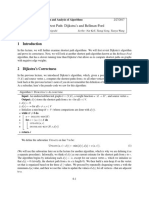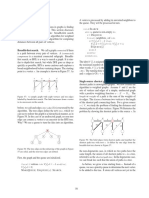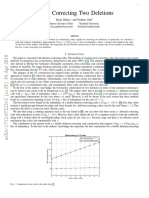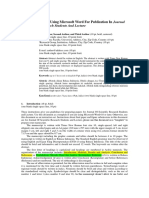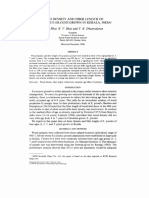0% found this document useful (0 votes)
93 views3 pagesBfs Find Shortest Path On Unweighted Graph
BFS finds shortest paths between the root node and all other reachable nodes in a graph. This is proven by induction on the "position number" of each node in the BFS tree. The position number indicates the order in which nodes are inserted into the queue during the BFS search. It is proven that for any node v: (1) its distance from the root is equal to its level in the BFS tree, and (2) any other node at a lower distance must have a lower position number. This guarantees BFS finds shortest paths by always exploring closer nodes before farther ones.
Uploaded by
Ngo Quang MinhCopyright
© © All Rights Reserved
We take content rights seriously. If you suspect this is your content, claim it here.
Available Formats
Download as PDF, TXT or read online on Scribd
0% found this document useful (0 votes)
93 views3 pagesBfs Find Shortest Path On Unweighted Graph
BFS finds shortest paths between the root node and all other reachable nodes in a graph. This is proven by induction on the "position number" of each node in the BFS tree. The position number indicates the order in which nodes are inserted into the queue during the BFS search. It is proven that for any node v: (1) its distance from the root is equal to its level in the BFS tree, and (2) any other node at a lower distance must have a lower position number. This guarantees BFS finds shortest paths by always exploring closer nodes before farther ones.
Uploaded by
Ngo Quang MinhCopyright
© © All Rights Reserved
We take content rights seriously. If you suspect this is your content, claim it here.
Available Formats
Download as PDF, TXT or read online on Scribd
/ 3



























